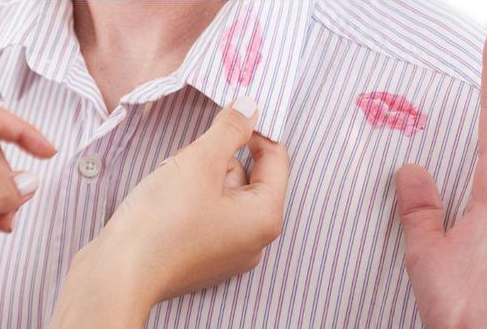
If Your Husband’s Underwear Has These Stains, It’s a Clear Sign That…
Let’s be honest—laundry day isn’t exactly filled with surprises. You sort, you wash, you fold. It’s a routine as old as time. But occasionally, something catches your eye that makes you pause. There, in his white briefs, is a yellowish stain that wasn’t there before. Or perhaps you notice a persistent dampness in the crotch area of his boxers. Your mind might jump to conclusions about hygiene, but before you start leaving out extra bars of soap, it’s important to know that these common stains could actually be important health signals.
For couples who’ve been together for decades, noticing changes in each other’s health often happens in these small, domestic moments. While some stains are perfectly normal, others can indicate underlying health conditions that are common—and treatable—in men over 50. Understanding what these stains might mean could help your partner get the care he needs sooner rather than later.
The Yellow Stain: More Than Just Urine
The most common stain you might notice is a yellowish discoloration around the front of the underwear. While this can sometimes be caused by urine droplets (especially if he’s dealing with prostate issues that make it difficult to fully empty the bladder), there are other possibilities worth considering:
1. Pre-ejaculate or Seminal Fluid Leakage
As men age, they may experience what’s known as prostatorrhea—an involuntary release of prostatic fluid during bowel movements or when straining. This isn’t the same as ejaculation and doesn’t contain sperm, but it can leave similar stains. While usually harmless, if this becomes frequent, it’s worth mentioning to a doctor.
2. Smegma
In uncircumcised men, poor hygiene can lead to smegma buildup—a combination of dead skin cells and natural secretions that can stain underwear. This is easily addressed with proper cleaning but if ignored, can lead to infections.
3. Prostate Issues
A consistently damp spot or yellow stain, particularly when combined with symptoms like frequent urination or difficulty starting urine flow, could signal prostate enlargement (BPH). The prostate gland surrounds the urethra, and when it enlarges, it can prevent the bladder from emptying completely, leading to post-void dribbling.
The Brownish-Red Stain: When to Pay Close Attention
Any reddish or brownish staining should never be ignored. While it might be something simple like hemorrhoidal bleeding, it could also indicate:
1. Blood in Urine (Hematuria)
This can range from microscopic (only visible under a microscope) to gross (visible to the naked eye). Causes can include:
- Urinary tract infections
- Kidney stones
- Prostate issues
- In rare cases, bladder or kidney cancer
2. Blood in Semen (Hematospermia)
While often benign, especially in younger men, blood in semen in men over 40 warrants a doctor’s visit to rule out more serious conditions.
The White, Chalky Stain: Usually Normal but…
A white, crusty stain is typically dried semen and is completely normal. However, if you notice:
- A significant increase in frequency without sexual activity
- Accompanying pain or discomfort
- Changes in texture or color
It might be worth discussing with a healthcare provider.
How to Approach This Delicate Subject
Finding stains in your husband’s underwear can be awkward to discuss, but approaching it with care and concern is key. Here are some tips:
Choose the Right Time: Don’t bring it up when you’re both tired or stressed. Choose a private moment when you have time to talk.
Use “I” Statements: Instead of “You have stains in your underwear,” try “I noticed something in the laundry that concerned me about your health.”
Focus on Health: Frame it as a health concern rather than a hygiene issue. “I read that certain stains can be early signs of treatable conditions, and I want to make sure you’re okay.”
Offer Support: “I made you a doctor’s appointment—I can come with you if you want.” Or “Would you like me to call the urologist for you?”
What the Doctor Will Want to Know
If your husband does decide to see a doctor (and he should if stains persist), they’ll likely ask about:
- How long the staining has been occurring
- Any accompanying symptoms (pain, burning, frequency changes)
- Medical history including prostate issues
- Current medications
- Any changes in sexual function
Prevention and Management
While not all staining can be prevented, these steps can help:
Proper Hygiene: Regular bathing and, for uncircumcised men, proper foreskin care can prevent smegma-related stains.
Pelvic Floor Exercises: Kegel exercises can help with urinary dribbling in some men.
Regular Check-ups: Men over 50 should have regular prostate exams and urinalysis as part of their routine health maintenance.
Absorbent Products: For persistent urinary issues, protective pads or special moisture-wicking underwear can help manage symptoms while treatment is underway.
Noticing changes in your partner’s laundry isn’t about snooping—it’s about caring. Many of the conditions that cause these stains are highly treatable when caught early. By understanding what these signs might mean and approaching the conversation with compassion, you’re not just dealing with laundry stains—you’re potentially helping catch health issues while they’re most manageable. After all, looking out for each other’s health is what decades of partnership are all about. The next time you’re folding laundry and something gives you pause, remember that it might be more than just a stain—it might be a sign that it’s time for a check-up.